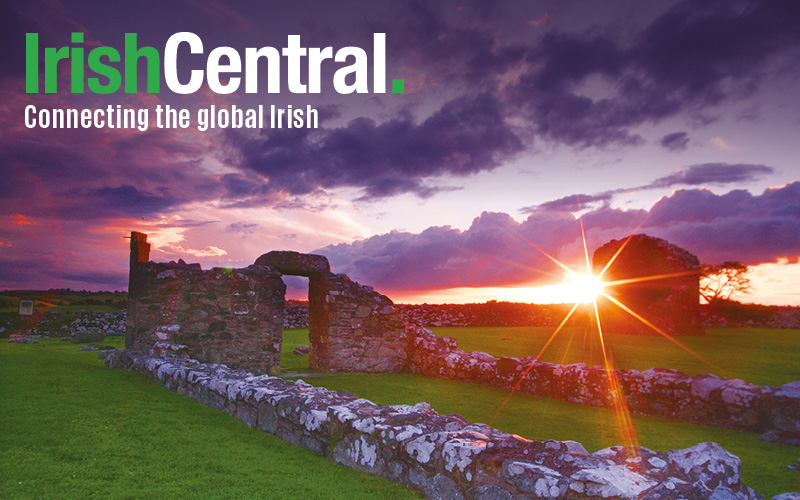The latest book in the Father Browne collection, a treasury of outstanding images capturing the historic city of Dublin from 1925 to 1950, has been released.
Browne, best known for the photographs he took on the Titanic, manages to take photographs of the city and Dubliners that are bursting with wisdom, humor, nostalgia, artistry, information and record. “Father Browne’s Dublin: Photographs 1925–1950” includes almost 100 photographs of Dublin at work, at play, and at rest. From Dublin is a city of children, fallen horses, window shoppers, and churchgoers, to canals, bridges, boats, trams, and trains. The city’s diversity is shown through images of its grand houses and its tenements, its middle classes and its poor, its industry and its hospitals.
Reverend Francis Browne was born in cork, in 1880. His parents both died when he was very young and he was raised by his, Robert Browne, Bishop of Cloyne, who bought him his first camera shortly before the younger man embarked on a tour of Europe in 1897, having graduated from high school.
When he returned home he joined the Jesuits order and spent two years in study at Saint Stanislaus College, Tullabeg, County Offaly. He went on to attend the Royal University, Dublin, where he was a classmate of James Joyce. Joyce featured him as Mr Browne the Jesuit in “Finnegan’s Wake.” Following the Royal University Browne studied theology at the Milltown Institute of Theology and Philosophy.
In April 1912 he received a present from his uncle: a ticket for the maiden voyage of RMS Titanic from Southampton, England to Queenstown, Ireland, via Cherbourg, France. He travelled to Southampton via Liverpool and London, boarding the Titanic on the afternoon of 10 April 1912.
Browne took dozens of photographs of life aboard Titanic on that day and the next morning. He shot pictures of the gymnasium, the Marconi room, the first-class dining saloon, his own cabin, and of passengers enjoying walks on the Promenade and Boat decks. He captured the last known images of many crew and passengers, including Captain Edward J. Smith, gymnasium manager T.W. McCawley, engineer William Parr, Major Archibald Butt, and numerous third-class passengers whose names are unknown.
During his voyage on the Titanic, Browne was befriended by an American millionaire couple who were seated at his table in the liner's first-class dining saloon. They offered to pay his way to New York and back in return for Browne spending the voyage to New York in their company. Browne telegraphed his superior requesting permission, but the reply was an unambiguous "GET OFF THAT SHIP – PROVINCIAL."
Browne left the Titanic when she docked in Queenstown, Ireland and returned to Dublin to continue his theological studies. When the news of the ship's sinking reached him, he realized that his photos would be of great interest, and he negotiated their sale to various newspapers and news cartels. They appeared in publications around the world. Browne retained the negatives. His most famous album has been described as the “Titanic Album of Father Browne.”
The famous photographer was ordained in July 1915. In 1916 the priest, now 36, went to Europe to join the Irish Guards as a chaplain. He served with the Guards until the spring of 1920, including service at the Battle of the Somme and at Locre, Wytschaete, Messines Ridge, Paschendaele, Ypres, Amiens and Arras in Flanders.
He was wounded five times during the war, once severely in a gas attack, and was awarded the Military Cross and Bar for his valor in combat. Browne took many photographs during his time in Europe; one, which he called "Watch on the Rhine" (see below) is considered a classic image of World War I. He assembled a collection of his war photographs in an album named after his most famous photograph and distributed copies to his colleagues in the Guards.
After the war, he returned to Dublin, where, in 1922, he was appointed superior of Gardiner Street Church in Dublin. Ill health dogged him, however, and in 1924 it was thought that he would recover more quickly in warmer climes. He was sent on an extended visit to Australia. He took his camera along, photographing life aboard ship and in Cape Town, South Africa, where he broke his voyage. His photographs from Australia covered a cross-section of life in the continent; he took pictures of farms, cattle stations, industries, new immigrants, and members of Irish religious orders who lived in that country.
On his way back to Ireland, he visited Ceylon, Aden, Suez, Saloniki, Naples, Toulon, Gibraltar, Algeciras, and Lisbon, taking photographs of local life and events at every stop.
It is estimated that Browne took more than 42,000 photographs during his life.
Francis Browne died in Dublin in 1960 and was buried in the Jesuit plot in Glasnevin Cemetery in Dublin. His negatives lay forgotten for 25 years after his death; they were found by chance in 1986 when Father Edward E. O'Donnell discovered them in a large metal trunk, once belonging to Browne, in the Irish Jesuit archives.
O'Donnell brought the negatives to the attention of several publishers: 23 volumes of the photographs have now been published.
Father Browne has been favorably compared with world-renowned photographer Cartier-Bresson. This collection, “Father Browne’s Dublin: Photographs 1925–1950,” is no exception.
For more information on the books visit the Father Browne Collection on Facebook.




Comments